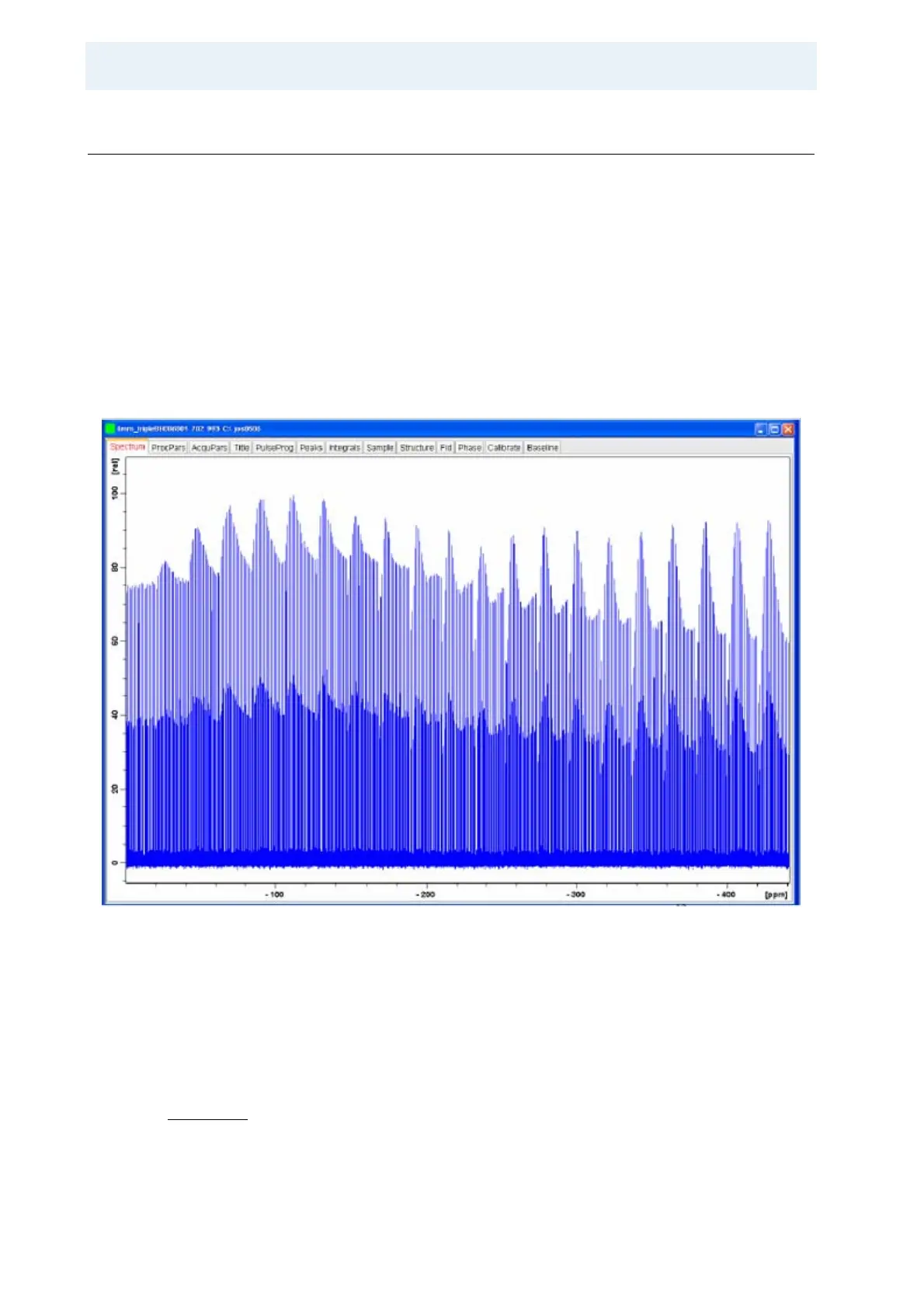90 (327) BRUKER BIOSPIN User Manual Version 002
Decoupling Techniques
TPPM Decoupling 5.1.2
TPPM decoupling surpasses the traditional cw decoupling. The decoupling pro-
grams tppm15 and tppm20 use a 15 and 20 degree phase shift between the two
pulses, respectively. Both operate at power level pl12. The cpd program tppm13
uses 15 degree phase shift, as tppm15, but operates at power level pl13.
In order to optimize the decoupling one optimizes pcpd2 (AV3, or p31, AV1+2)
with popt and the carrier frequency, by varying o2 or o2p. Strongly proton cou
-
pled
13
C-resonances narrow substantially, especially at high magnetic fields
(>300 MHz).
The figure below shows an arrayed optimization using popt for the TPPM phase
tilt and pcpd2 (available in TS2.0 and higher).
Figure 5.1. Optimization of TPPM Decoupling, on Glycine at Natural Abundance
The figure above shows optimization of TPPM decoupling, on glycine at natural
abundance,
13
C CPMAS at 5 kHz spin rate. Each block represents a 2° degree in-
crement of the phase toggle and the variation in each block stems from incremen-
tation of the pulse width in 0.2 µs increments. Optimum decoupling was found with
a 4.5 µs pulse at a 16° phase toggle. It is obvious that more than one near opti
-
mum combinations of phase toggle and pulse length exist.
Reference:
1. A.E. Bennett, C.M. Rienstra, M. Auger, K.V. Lakshmi, and R.G. Griffin; Heteronuclear decoupling in ro-
tating solids, J. Chem. Phys. 103 (16); 6951 – 6958 (1995).
